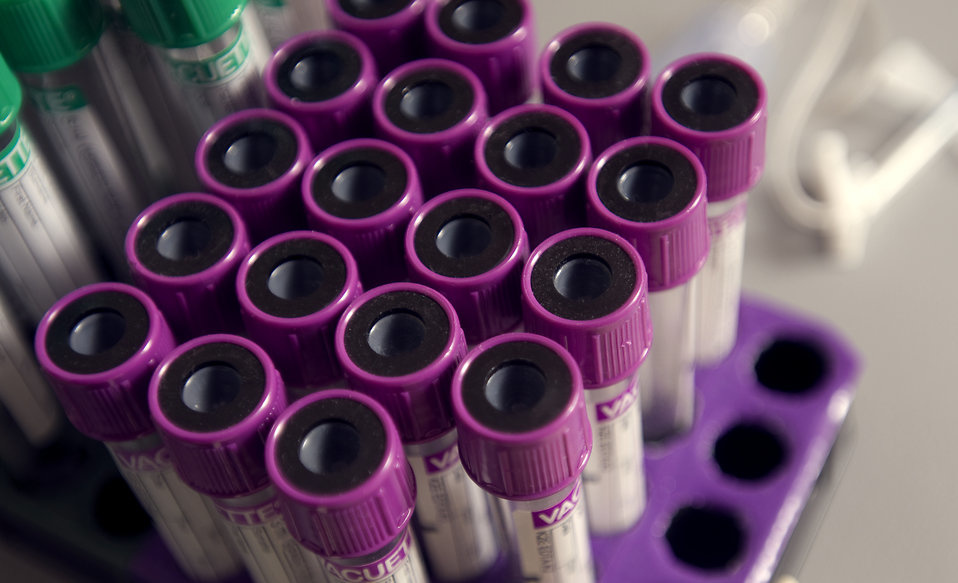Ask the Expert: Finding Out What Chemicals Are In Your Body
What the heck is biomonitoring?
Maybe you’ve heard of different organizations doing something called biomonitoring. Maybe you have been biomonitored but aren’t sure what it means. Or, maybe you have been worried about your own amount of contact with certain chemicals and Googled how to get it checked. Well, we talked to Dr. Megan Latshaw, Assistant Scientist in the Department of Environmental Health and Engineering at the Johns Hopkins Bloomberg School of Public Health to figure out what it is, how it works, and what the benefits are.

Dr. Megan Latshaw
First off, what is biomonitoring anyway? According to the Centers for Disease Control and Prevention (CDC), biomonitoring is “determining which environmental chemicals people have been exposed to and how much of those chemicals actually get into their bodies.”
This provides valuable understanding into the effects certain chemicals can have on an individual or even a community.
“For an individual, biomonitoring can provide insight into whether they are being exposed to a chemical at a higher level than the general population. Results can help physicians make decisions about treatments or interventions, but it can also lead individuals to take action to reduce exposure. So, an individual might say ‘okay, I am going to get my paint tested at my house’ or ‘I am going to buy water filter’,” Dr. Latshaw explains.
The results of biomonitoring are an effective way to help individuals learn more about their own health and what changes they can make to avoid certain chemicals. Biomonitoring can also help determine if communities as a whole are being exposed to certain chemicals, say from a factory in the area or water that isn’t being properly treated.
“At the community level, biomonitoring can indicate a problem that needs to be addressed on a larger scale. So, maybe cleaning up hazardous waste or deciding to put in place a way to monitor the population’s health,” Dr. Latshaw says.
Not only can it confirm that people are being exposed to a variety of chemicals or sources of pollution, but is also can determine if the community does not need to worry.
“Biomonitoring can also be used to calm community concern, in cases where levels are found to be similar to the general population,” Dr. Latshaw explains.
Not all encounters with chemicals, dust, or other substances are something to be concerned about. In this day and age, everyone is exposed to some mixture of chemicals all the time, but this doesn’t mean we all need to be constantly worried. For some chemicals, our bodies can handle small amounts and not be hurt. Biomonitoring helps gauge how much of a certain substance we have in our system, and toxicologists can tell us if that amount might cause harm.
Understanding what it can do is great, but it is important to understand how it works. Often, it requires a sample being sent to a lab.
“It is typically blood or urine sent to a lab that is able to measure it for whatever the chemical of concern is,” Dr. Latshaw shares.

It is also important to understand that it’s not looking for just the chemical of concern. It’s a complicated process.
“Some chemicals of concern only stick around in the body for very short periods of time. Or, they might be metabolized by the body, so what you are really looking for is not the chemical itself, you are looking for a product of the chemical’s breakdown. [It could be that] once your enzyme attacks it, it might change it into something else. So, you really need to talk to an environmental health physician or toxicologist or laboratorian who understands what you are looking for. They will ask: Is there a marker for it, how long does that marker stick around, and how long ago was your exposure of interest?” Dr. Latshaw says.
So, if you are interested in being biomonitored, how can you make that happen?
The first step would be to talk to your doctor. Don’t be alarmed if your doctor doesn’t know much about it though. It is not something that that doctors are really trained about in school.
“If someone is interested [in biomonitoring] and their doctor doesn’t seem to know a lot [about it], then what they can do is … call an environmental health physician. There is actually a group called the American Academy of Environmental Medicine. You can go to their website and find a physician who understands environmental medicine,” Dr. Latshaw shares.
If you have a large group in your community that is worried about eating, breathing, or touching a specific health-harming substance, communities can also reach out.
“If a community wants to be biomonitored, they should contact their health department. Many health departments don’t have a biomonitoring program, so a community might want to contact ATSDR (the Agency for Toxic Substances and Disease Registry) or the Association of Public Health Laboratories, which recently launched the National Biomonitoring Network” Dr. Latshaw suggests.
The last piece is to understand that because this is such a complicated process, and it is not yet widely available, the cost is highly variable.
“Blood lead [testing] is something that is done on a regular basis, so that is much lower cost. But, if you want to look at perfluorinated chemicals, there are very few laboratories that can do that, so that is probably going to be relatively expensive,” Dr. Latshaw explains.
Biomonitoring can be a very useful test, but it is not very common as of yet. If you have a true concern about how often you come in contact with a certain chemical or heavy metal, be sure to talk to your doctor and find someone who understands the biomonitoring process who can help figure out the best option for you.
For more information about biomonitoring, visit the CDC page talking about the National Biomonitoring Program.
